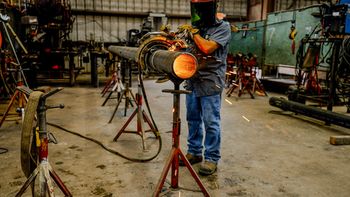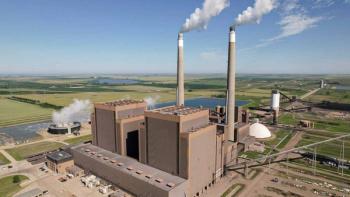
MULTIPLE MONITORING METHODS
Many condition-monitoring methods are effective in detecting specific failures and problems. However, each has its limits, and false alarms can be an issue.
Methods of predicting the remaining life of components have also been developed. They are usually reliability-based or developed around mathematically complex models. In simple terms, condition-monitored measurements have been divided into two regions: a stable zone and failure zone.
In the stable zone, condition measurements are considered normal or quasi-normal and, hence, a reliability-based model is often employed. When condition measurements indicate a problem or an issue, both reliability and condition-monitoring information are usually combined to predict the remaining machinery life.
The life-prediction model is dependent on the quality and accuracy of the condition-monitored measurements. Therefore, the application of multiple condition monitoring methods can significantly enhance life prediction and consequently predicted life.
Multiple data sources, backed up by information from several independent monitoring methods, enables more accurate life prediction.
After all, it may be unwise to stop turbomachinery for repair or overhaul based on only one abnormal monitoring signal. Without multiple monitoring technologies coming to the same conclusion, the health of equipment cannot be properly assessed.
Vibration analysis, oil analysis, wear-debris analysis, acoustic emission monitoring and temperature measurements are among the possible technologies that can be employed.
Two or more should be used on every piece of machinery. If at least two monitoring methods indicate there is an issue, action can usually be taken with confidence.
Vibration analysis is commonly used as a permanent monitoring system with two or three others used as needed to confirm detected issues. For critical machinery, as many as five options might be used as permanent online (live) monitoring methods.
For example, online vibration monitoring, such as bearing double (X-Y) vibration sensors and vibration measurements of casings, is often provided, as well as online temperature measurements (in the form of resistance temperature detectors or others) for bearings.
In the case of abnormal vibration and temperature, oil or wear debris analysis could be used to further evaluate the bearings. A spike in bearing materials (such as lead, tin or aluminum) would indicate a bearing issue is developing.
In the case of gearboxes, online vibration monitoring might detect high vibrations. Oil analysis could then be arranged for further reliability assessment. A slight increase in iron could be considered as confirmation of a problem in the gear unit.
Without the benefit of two, three or even four technologies that confirm the likelihood of a problem, there is always a risk that an inspection after a shutdown might find nothing wrong.
Case in point: the measured vibration level for one compressor reached triple the baseline value during a period of two months. Lubrication oil analysis also showed a significant increase in bearing materials and other contaminants.
The equipment was stopped at the first opportunity. Detailed inspection and observation detected a damaged seal that allowed contaminants to invade the bearing. This was the cause of high vibration and abnormalities in the lubrication oil analysis.
Failure modes
Any effective condition monitoring package requires a good understanding of the failure modes and degradation mechanisms involved. Most monitoring methods applied today focus on temperature measurements, vibration analysis, acoustic emission, oil monitoring and wear debris analysis.
Methods such as performance monitoring based on flow-rate, pressure, power, and so on, are well understood and should also be used. Creep and fatigue models, too, can be used for monitoring of different parts and components.
Overall, condition monitoring techniques can identify where turbomachinery problems are occurring and can often help to pinpoint the cause. However, it is far more difficult to predict the remaining life of machine parts once a problem has been identified. Too often, it is challenging to determine if a component needs to be replaced or repairs need to be performed.
Newsletter
Power your knowledge with the latest in turbine technology, engineering advances, and energy solutions—subscribe to Turbomachinery International today.




